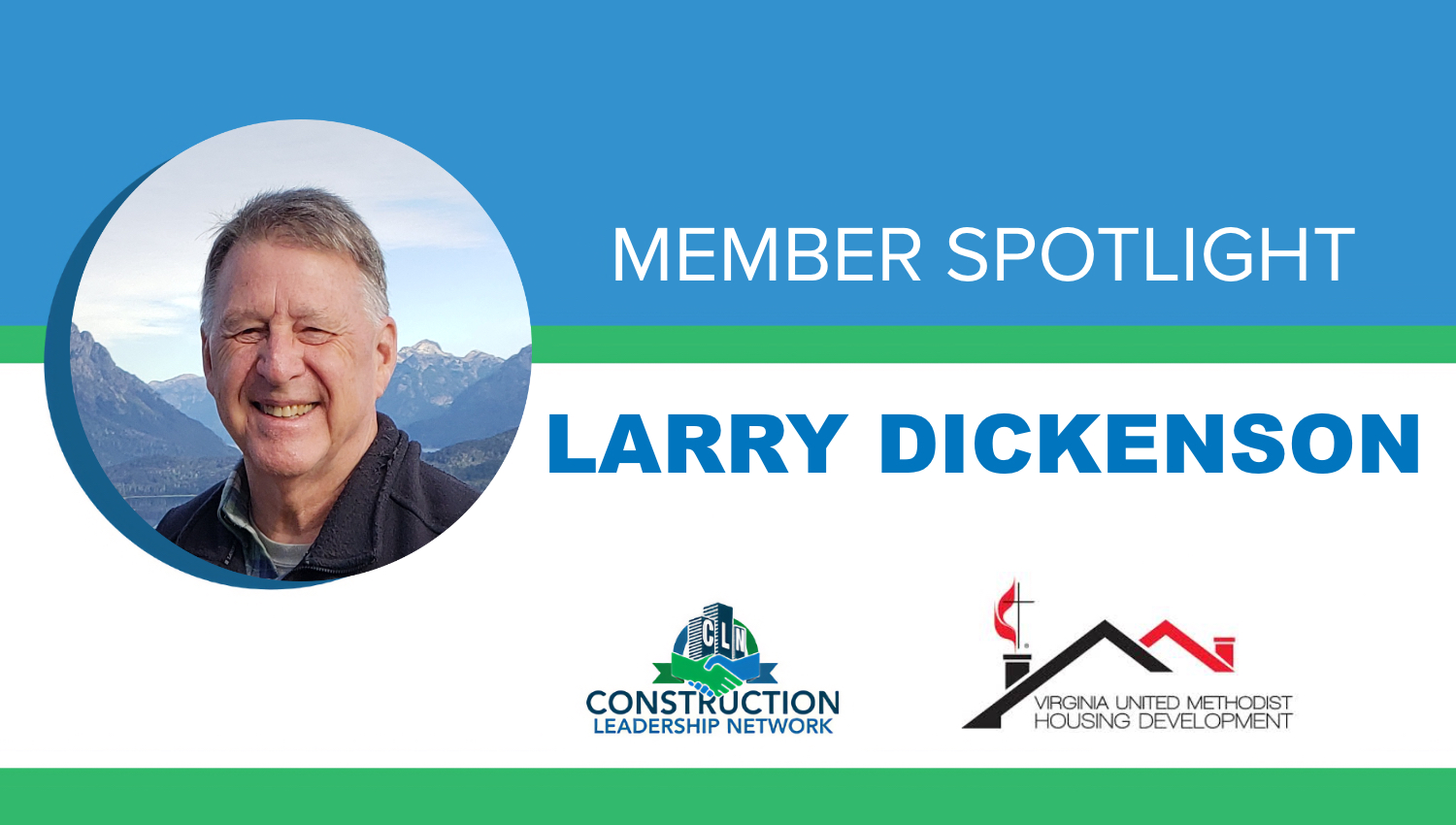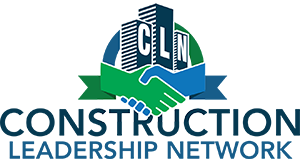
At the end of this year, Lawrence “Larry” Dickenson will retire after 48 years in the construction industry and 28 years of work with Virginia United Methodist Housing Development Corporation (VUMHDC).
Larry is also one of the inaugural members of Construction Leadership Network (CLN) and was part of its previous iteration, the Jack Miller Network.
Founded in 1975, VUMHDC is a sponsor and developer of affordable housing throughout Virginia. As a board member since 1996 and president since 2016, Larry has been instrumental in the growth of VUMHDC. Under his leadership, the organization has expanded its portfolio to include 16 independently owned and operated properties.
We sat down with Larry to learn more about him and to get his thoughts about the evolution of CLN over the years.
CLN: You’re planning to retire from VUMHDC the end of this year, but you also retired from another company in 2017. Please tell us a little about yourself and your background in construction.
LD: I was born and raised in Roanoke, which is where I live now. I began working with the Branch Group in Roanoke in 1983 and retired from there in early 2017 as the executive vice president. I had a number of roles in operations, estimating and sales, corporate governance and acquisitions.
Even while I was in college in the architectural program at UVA, I was working summers with a local construction company. I never actually spent a minute in professional practice in architecture—my first job out of school was with a national construction company in Dallas, Texas. I was there not quite two years before coming back to Virginia with a regional construction company in Newport News, Va. on the eastern side of the state, where I was the project engineer or superintendent for five major projects over five years. Then I moved to Branch in Roanoke and spent the next 34 years there.
The Branch Group had had multiple business lines, with a building company, highway company and mechanical/electrical company. During my time there, the company grew rapidly, becoming a regular listing in the ENR Top 400 Contractors beginning in the mid-1990’s. Much of the growth can be attributed to our strong company culture, founded on our 100% employee ownership.
In 1996, while I was still working with the Branch Group, I was elected to the Board of Directors of the Virginia United Methodist Housing Development Corp. In November 2016, I was elected President of VUMHDC, precipitating my retirement from Branch. So, I have served as president of VUMHCD since 2016.
CLN: How did you first get involved with the Jack Miller Network?
LD: In the early 2000s, I attended one of Jack Miller’s seminars on business development, which looked interesting and potentially helpful for some newer people I had hired at the Branch Group. Soon after, Jack Miller reached out and persuasively invited me to have Branch join the network, even though I wasn’t very familiar with it at the time.
CLN: What value did you and your company find from participating in the Jack Miller Network?
LD: Even though the Branch Group was much larger than most of the companies in the network, we found a lot of value in it. It provided a great environment for our younger, less experienced people to learn how other companies do things, freely ask questions, and build relationships across the industry. For me personally, I realized each company, regardless of size, represented an individual laboratory on how to engage the construction market profitably. There was something to learn from each one’s unique approaches to project management, business development, marketing and more.
CLN: How did the Jack Miller Network differ from other industry associations?
LD: There were several important differences. First, Jack Miller emphasized the concept of “win-win sharing” and tried to minimize direct competitors in the network to enable more open sharing. It never functioned as a lobbying group like many industry associations do. Plus, the meetings brought people together from geographic markets across the US and Canada, rather than just regionally, so there was less concern about sharing with competitors.
The network really encouraged bringing new ideas and different approaches to all aspects of managing and operating a successful construction business.
CLN: What changed when the Jack Miller Network transitioned to Construction Leadership Network (CLN)?
LD: During the period after 2010, the meeting formats had gotten a bit rote. I was asked by JMN members to meet personally with Jack to discuss some new ideas that had been percolating. Unfortunately, Jack’s health declined unexpectedly quickly that year, and he passed away in the summer of 2014.
Later that year, several members of the group, including me, organized a meeting in Chicago a few months later with about 25 people from long-time member firms. We discussed the core values of JMN that we thought should be preserved and how a new group would need to change and evolve. After that, Stephanie Schmidt stepped up, wanting to take on the responsibility of putting together a new network. I and others fully supported that idea. She brought John into it, and they took it from there. It was really great to see. They worked on what a proposed new format might look like, getting input from the same group of folks. It took at least a year, maybe a year and a half, before the first CLN meeting occurred.
Q: What were some of the key changes and evolutions from the Jack Miller Network to CLN?
LD: In the Jack Miller Network, the plenary sessions centered around Jack speaking on various subjects and sharing his own life story, which few others could match. Stephanie and John smartly realized they didn’t want to even attempt to capture people’s attention that way, especially since Jack was really one of a kind.
So instead, the CLN plenary sessions featured top-tier industry or inspirational speakers addressing important topics related to the construction industry. The “focus group” sessions were retained, but had some sessions led by paid consultants, who were experts in areas like marketing, legal matters, scheduling software, etc. They still had members lead a certain number of focus groups, so in that way it continued to be member led.
The peer groups meetings during the year were a brand-new idea brought in by CLN. Before it was only done informally by small groups. Overall, CLN modernized things to fit today’s construction companies in terms of best practices, solutions, and finding new business and resources.
CLN: What are your expectations for the future of Construction Leadership Network?
LD: Stephanie and John have done a tremendous job modernizing CLN to meet the evolving needs of today’s construction companies. The focus on best practices, innovative solutions, and fostering meaningful connections among members makes CLN an invaluable resource for the industry. But the core emphasis on “win-win sharing” remains at the heart of the CLN experience. As I step back from my involvement, I’m excited to see how CLN continues to grow and adapt in the coming years.
—
By bringing together construction professionals from diverse backgrounds and experiences at our Annual Conferences and peer groups, CLN seeks to foster collaboration, innovation, and growth within the industry. Ready to become a member? Connect with us today!
